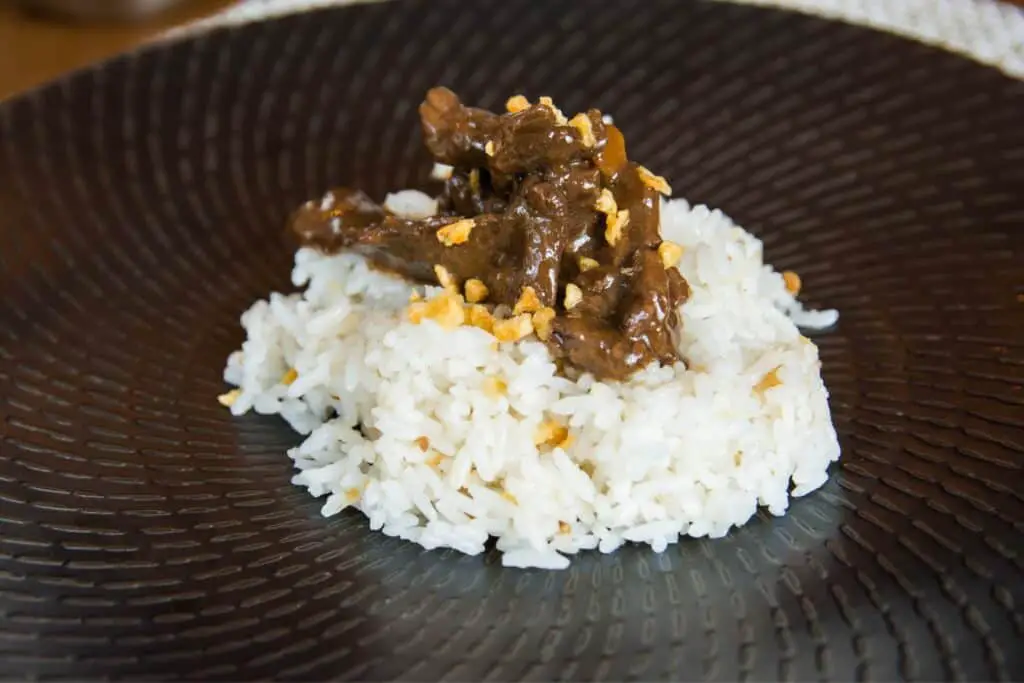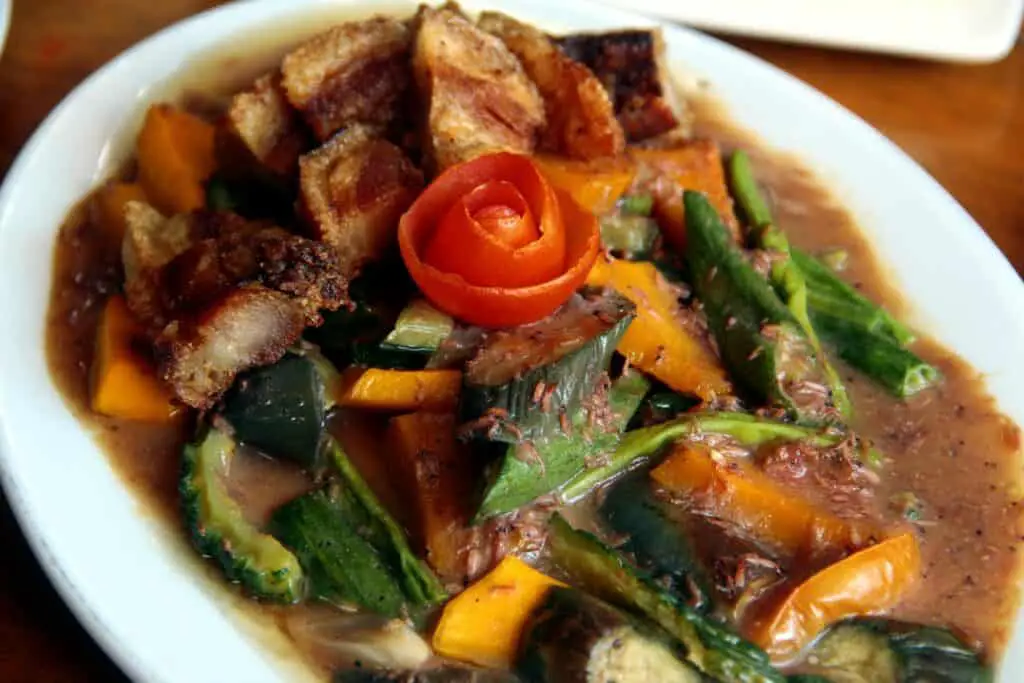
Filipino food culture is a little peculiar because Filipinos famously eat rice at every meal of the day. Yes, that means even at breakfast. But what about for lunch? What do Filipinos commonly eat for lunch? Well it’s a little more complicated because many Filipino foods are considered soup, and as we know, it is difficult to bring soups on your commute to work. In this post I will talk about the 10 most popular foods that Filipinos like to eat for lunch when they are going out to work.
Tapa

Tapa is a type of Filipino cured meat that is typically made from beef, although chicken and pork are also popular options. The meat is marinated in a mixture of soy sauce, vinegar, garlic, and pepper, then sun-dried or air-dried. Tapa is commonly eaten for lunch by Filipinos, often served with rice and a fried egg. It can also be eaten as an appetizer or snack. Tapa is typically made fresh, but it can also be stored in the fridge for up to a week.
Longganisa
Longganisa is a type of Filipino sausage that is typically made from pork, although chicken and beef versions are also common. The sausage is heavily seasoned with garlic, sugar, and vinegar, and it is often accompanied by rice and eggs. Longganisa is a popular breakfast dish in the Philippines, but it can also be eaten for lunch or dinner. The sausage is usually pan-fried, although it can also be grilled or baked. In addition to being a popular meal option, longganisa is also often served as an appetizer or snack. Filipinos often enjoy eating longganisa with dipping sauces such as vinegar or soy sauce.
Tinapa
Tinapa is a type of dried fish that is commonly eaten by Filipinos for lunch. The fish is typically smoked, which gives it a distinctive flavor. Tinapa is high in protein and omega-3 fatty acids, making it a healthy option for lunch. It is also relatively inexpensive, which makes it a popular choice for families on a budget. Tinapa is typically served with rice and vegetables.
Galunggong
Galunggong is a type of fish that is common in the Philippines. It is often eaten for lunch by Filipinos because it is affordable and easy to prepare. Filipinos typically eat galunggong with rice, boiled vegetables, and a dipping sauce made from vinegar, garlic, and chili peppers. The fish can also be fried or grilled. Galunggong is a popular choice for lunch because it is filling and nutritious. It is an excellent source of protein and omega-3 fatty acids, which are essential for good health. Galunggong is also low in mercury, making it a safe choice for pregnant women and young children.
Tocino
Tocino is a popular dish in the Philippines that is typically made from pork that has been marinated in a mixture of vinegar, soy sauce, and sugar. The pork is then cooked until it is caramelized and slightly charred. Tocino is commonly eaten for breakfast or lunch and is often served with rice and eggs. Some Filipinos also like to eat Tocino with pickled cucumbers or a dipping sauce made from vinegar, garlic, and chili peppers. While Tocino is traditionally made from pork, chicken or beef can also be used. The important thing is that the meat is cooked until it is juicy and flavorful.
Pinakbet

Pinakbet is a popular Filipino dish made with a variety of vegetables. It is commonly eaten for lunch by Filipinos, as it is simple to make and very filling. The vegetables used in Pinakbet vary depending on region, but typically include eggplant, squash, okra, and tomatoes. Pinakbet is usually cooked with shrimp paste, which gives it a distinct slightly sweet flavor. It is typically served with rice. Pinakbet is a delicious and nutritious dish that is enjoyed by Filipinos of all ages.
Dinengdeng
Dinengdeng is a popular dish in the Philippines that is commonly eaten for lunch. The dish typically consists of vegetables, such as eggplant, okra, and bitter gourd, that are stewed in fish paste. Dinengdeng is often served with rice and can be garnished with green onions, chili peppers, and lemon. The dish is believed to have originated in the Ilocos region of the Philippines, though it is now enjoyed throughout the country. Dinengdeng is a hearty and nutritious meal that is perfect for a midday meal.
Adobo

Filipino Adobo is a dish traditionally made with chicken, pork, or both that is stewed in vinegar, soy sauce, garlic, and pepper. It is commonly eaten for lunch by Filipinos because it is easy to prepare and can be served with rice. Filipinos typically eat adobo with a spoon and fork, using the fork to hold the meat and the spoon to scoop up the sauce. The dish can also be eaten with bread, which is used to soak up the flavorful sauce. Whether enjoyed as a simple meal or part of a more elaborate feast, Adobo is a delicious dish that is cherished by Filipinos.
Tahong
Tahong is a type of shellfish that is commonly eaten for lunch by Filipinos. The reasons for this are twofold. First, tahong is a relatively inexpensive food source. Second, tahong is a good source of protein and other nutrients. As such, it provides Filipinos with a filling and nutritious meal. Tahong is typically cooked in one of two ways. It can either be steamed or fried. When steamed, tahong is usually served with vinegar and soy sauce. When fried, tahong is often served with a dipping sauce made from vinegar, garlic, and chili peppers. Regardless of how it is prepared, tahong is a delicious and popular Filipino dish.
Bistek Tagalog
Bistek Tagalog is a popular Filipino dish made with beef that is typically served for lunch. The reason why bistek tagalog is commonly eaten for lunch by Filipinos is that it is a hearty and filling meal that provides plenty of energy and sustenance to get through the rest of the day. When eating bistek tagalog, Filipinos typically pair it with rice, which helps to round out the meal and provide even more sustenance. Additionally, Bistek Tagalog is often served with a dipping sauce on the side, which can add an extra level of flavor to the dish. Overall, Bistek Tagalog is a delicious and satisfying meal that is perfect for fuelling up during lunchtime.

